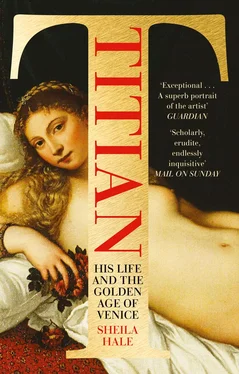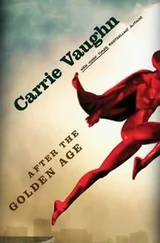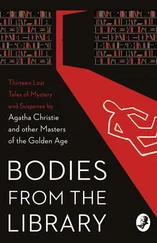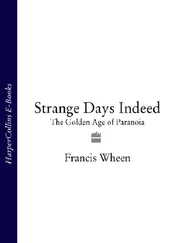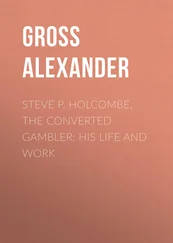Early in his career Giovanni had mixed his mediums, sometimes establishing the composition in tempera and finishing it with oil glazes. The first work in which he fully exploited the potential of oil paint and glazes was the Coronation of the Virgin, a watershed in the history of Venetian painting commissioned by Costanzo Sforza, lord of Pesaro, probably between 1472 and 1475. The Resurrection, St Francis in the Desert and the Transfiguration from later in the decade show Bellini’s increasing mastery of the technique, although the drying cracks that can be seen to a greater or lesser degree in many of his early oil paintings indicate that he was not yet entirely accustomed to the chemistry of the medium. When Titian joined Giovanni as an apprentice some three decades later no up-and-coming Venetian artist used anything but oil paint. So Titian had the advantage over his master of early training in a medium that was still new and exciting enough to invite further experimentation. Like many good teachers, Giovanni was as ready to absorb lessons from his best pupils as to impart them: it has often been said that the paintings of his later years show indebtedness to the examples of Titian, Giorgione and Sebastiano Luciani. The colouristic freedom of his St Christopher in the church of San Giovanni Crisostomo is so close to Titian that one Italian scholar22 has been tempted to speculate that Titian might have had a hand in it. The curtain behind Giovanni’s Young Woman with a Mirror that divides her private space sharply from the landscape is a device Titian had used several years earlier.
By the time Titian came to him as a pupil Giovanni was something of a living national treasure. From 1479 until his death in 1516 he received from the state the much coveted sanseria, a sinecure in the form of an honorary tax-free brokerage in the German exchange house awarded by the government-controlled Salt Office to various individuals including a number of artists who supplied paintings to the doge’s palace. More indicative of his status was an unprecedented exemption from membership of the painters’ guild granted in 1480. It was a privilege that was not given again to any other Italian artist before Michelangelo sixty years later. Sought after by the foreign aristocracy and the small circle of Venetian patricians who were beginning to collect cabinet paintings, Giovanni was by no means unaware of his value.
His studio, like most Venetian studios, was run as a business. While he preferred to work on original paintings in private, his assistants were employed in turning out copies or variants of his Madonnas, which were so greatly in demand that purchasers were either prepared to accept workshop versions or unable to recognize that they were not entirely by the master’s hand.
Giovanni’s usual practice seems to have been to provide cartoons as templates for the Madonnas – in some paintings the pounced marks from the transfer process can be detected by infrared imaging techniques – to be traced by assistants and then to paint the side figures and landscapes himself. Although there is not enough documentation to provide precise information about his prices there are indications that he charged something between 100 and 300 ducats for altarpieces. Isabella d’Este beat him down from 150 ducats to 100 for an allegory, and from 100 to 50 for a devotional painting for her bedroom. And yet, despite his genius and typically Venetian head for money, he remained a modest and essentially private man who was, as far as we can tell, universally liked. Dürer, who was treated badly by other artists in Venice, certainly liked and admired him. ‘Everyone tells me what an upright man he is,’ he wrote in one of his letters home in 1506. ‘I am genuinely fond of him. He is very old, and yet he is still the best in painting.’ Pietro Bembo, a close friend who described visits to his studio and had him portray his married mistress, Maria Savorgnan, referred to him affectionately as ‘il mio Giovanni’ – ‘my Giovanni’.
He had had a good start working with his father, a fine draughtsman of original subjects but not an overshadowing genius as a painter, who must have recognized and encouraged his son’s superior talent. But Giovanni’s life had not been entirely untroubled. Since he was not mentioned in his parents’ will, we can guess that he was illegitimate. A more serious stigma, if we are to believe the evidence of a Latin poem composed by a friend around 1507, would have been that he was apparently bisexual, although if the authorities knew about his homoerotic inclinations it would not have been the only time they chose to ignore that most heinous crime, as they saw it, in the case of a prominent and valuable Venetian. The poem, which was suppressed by a shocked librarian of the Marciana library in the early nineteenth century, was rediscovered and published in 1990 by an English scholar.23 It describes him in bed with a boy whose body is compared to the marble of Greek sculptures, and was evidently not intended as a criticism, let alone an exposé or for circulation. Whatever the truth about his sexuality it had not prevented him from marrying well. His wife Ginevra Bocheta, a relative of the Zorzi family of dyers, had brought him the substantial dowry, for an artist at that time, of 500 ducats. They had one son, Alvise. Since the poem was written after his wife’s death it is possible that he turned to boys only as an aged widower.
Some time around 1502 Giovanni bought a house on the mainland. But he was not a traveller and rarely left the Veneto unless tempted by irresistible commissions. The last of these came from Alfonso d’Este, Duke of Ferrara, for whom in 1514, two years before his death, he painted the Feast of the Gods, his first and last major mythological painting, parts of which would later be repainted by Titian. Giovanni’s last work, the Young Woman with a Mirror,24 was completed in 1515. It was the year before his death when he was well into his eighties. He signed it ‘Joannes bellinus faciebat M.D.X.V.’ Signing a painting as though it were still in progress was a trope, used by other artists including Michelangelo and, later, by Titian, referring to Pliny who had written in the preface to his Natural History that great art was never finished and that the greatest artists did not claim that a painting was finished to their satisfaction.
The subject of a young woman seated at her dressing table with a mirror was, like the reclining nude, a Venetian invention. Giovanni may have seen Titian’s Young Woman with a Mirror (Paris, Louvre).25 The underdrawings of the woman’s contours, which are unusually spare for Giovanni, suggest that he was experimenting with Titian’s technique of painting with only summary guidelines, but his use of a textured layer of underpaint in the background was his own innovation. This beautiful painting has been described as an ‘apotheosis of seeing’ and as one of the purest expressions in Venetian art of idealized nudity.26 The woman’s expensive headdress probably indicates that she was married. Her torso, which is usually thought to have been conceived after a statue or fragment, lacks the erotic appeal of Titian’s clothed beauty, who wrings her long, loose golden blonde hair like a Venus rising from the sea.
Giovanni, supreme master though he was, lacked Titian’s genius for drama and his penetrating understanding of human nature. His feasting gods for the Duke of Ferrara appear to be acting out rather than taking part in Ovid’s story of an orgy and attempted rape. (Either on his own initiative or at his patron’s request he lowered the necklines of the women in an attempt to make them more desirable.) His landscapes, enlivened though they are by charming naturalistic detail, have none of the poetry that Titian saw in distant mountains and lost horizons. Giovanni was essentially a religious painter, and the range of his subject matter, and of the emotions he conveyed, was narrower than those of his greatest pupil. And so it happened that Giovanni Bellini’s reputation was eclipsed soon after his death by Titian’s more sophisticated, dynamic and protean oeuvre. Vasari, whose sharp eye for quality was sometimes clouded by his commitment to Florentine painting and the Aristotelian theory of art as progressive, dismissed Giovanni for his ‘arid, crude and laboured manner’. Titian’s friend Pietro Aretino likened him to a poet who puts ‘perfumes in his inks and miniatures in his letters’. He was not rediscovered until the late nineteenth century when Ruskin pronounced the Frari and San Zaccaria altarpieces to be the two best pictures in the world,27 a judgement that encouraged Henry James’s rapturous description of the Frari altarpiece:
Читать дальше
